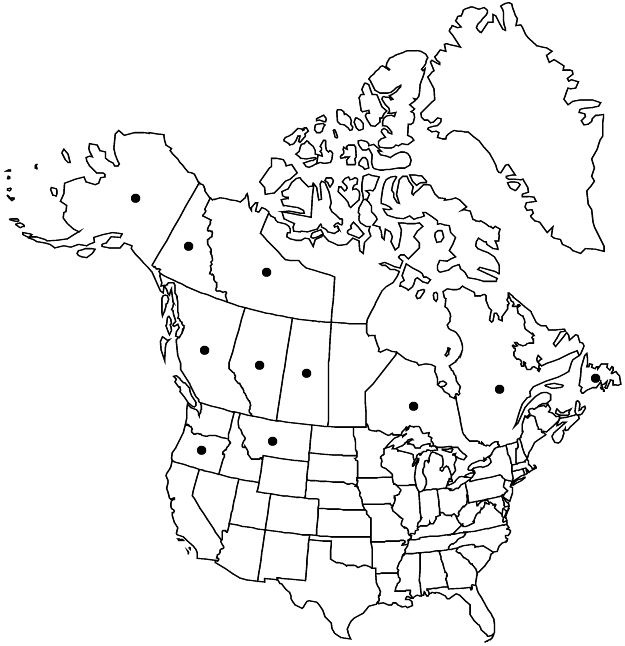Dryas drummondii
Bot. Mag. 57: plate 2972. 1830.
Plants 2–23 cm. Leaf-blades oblongelliptic to obovate, 4–38 (–46) × 2–24 mm, base usually cuneate, sometimes truncate or cordate, margins flat, crenate, dentate, or ± serrate, sinuses 10–25% to midvein, apex rounded to obtuse, surfaces smooth, tomentose, feathery hairs and stipitate-glands absent or on midveins and petioles; basal leaflets 1 (–2), 0.5–3 × 0.5–2 mm. Peduncles 40–263 mm. Flowers nodding at flowering; sepals ovate, 4–6 × 3–4 mm; petals 8–10 (–12), erect, yellow, 8–12 × 4–7 mm; filaments hairy. Achenes 2.5–3 mm; styles 15–39 mm. 2n = 18.
Phenology: Flowering Jun–Aug(–Sep).
Habitat: Sandy and gravelly beaches, flood plains, stream bars, rocky streams, grassy areas, alpine, calcicolous
Elevation: 0–3000 m
Distribution

Alta., B.C., N.W.T., Ont., Que., Sask., Yukon, Alaska, Mont., Oreg.
Discussion
In some states and provinces, Dryas drummondii has a limited distribution: northwestern Saskatchewan, Lake Superior islands of Ontario (relatively rare elsewhere in Ontario), Gaspé Peninsula, Quebec, northern Montana (Glacier National Park and surrounding area), and northeastern Oregon.
Dryas ×suendermannii Kellerer ex Sündermann, a hybrid between D. drummondii and D. hookeriana, has been reported from Alberta (J. G. Packer 1994). The hybrid shares with D. drummondii abaxial median and lateral leaf veins covered by tomentum, not viscid, stipitate glands absent; adaxial surface not viscid, and punctate glands absent. The hybrid shares with D. hookeriana an adaxially shiny leaf surface. It is intermediate in feathery hairs occasionally present (absent in D. hookeriana).
Selected References
None.
Lower Taxa
"thin" is not a number.